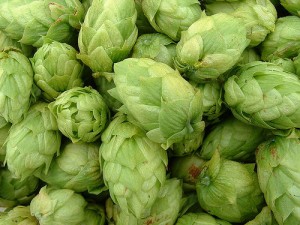 After several very busy weekends, I find myself a couple of kegs short of my July 4th weekend party goal. The party was supposed to feature four styles of beer, which I knew was an ambitious plan. I should be happy I have two styles ready to go – the American IPA I brewed in late May, and a batch of Kölsch brewed a couple of weekends ago which is ready to be kegged.
After several very busy weekends, I find myself a couple of kegs short of my July 4th weekend party goal. The party was supposed to feature four styles of beer, which I knew was an ambitious plan. I should be happy I have two styles ready to go – the American IPA I brewed in late May, and a batch of Kölsch brewed a couple of weekends ago which is ready to be kegged.
Most brewers would hang up their mash paddle and enjoy the party, happy to be able to serve 10 gallons of good brew instead of the usual backyard BBQ crappy macroswill. Especially considering that there is still a plethora of party details to take care of in the next week and a half, including a fairly involved food menu. However, I am not like most brewers – I am completely insane. I’m considering trying to go from grain to glass in one week.
Many a brewer has tried to rush a beer along to try and meet some competition or party deadline. Most of the time, the results are disastrous. The dance of yeast and malt is a fickle one, and trying to force the beer to bend to your schedule can lead to a host of issues. Hot fusel alcohol notes from high-temp turbo fermentations, CO2 bite from rushing a forced carbonation (natural carbonation isn’t even an option on this schedule!), and overall green-tasting beer are just a few of the perils that await an impatient brewer.
I do, however, think it can be done. Let’s talk about some assumptions.
Assumption 1: You aren’t doing this with any kind of complex beer. Forget anything with an OG above 1.040 or so. Forget your dry-hopping, your nine-malt grain bills, your oak chips, your bourbon infusions, all of that. We have to go fast here, and any kind of complexity is going to need time to mellow and allow flavors to meld.

"Put down that Hefe and have a seat over here"
Assumption 2: Forget any kind of aging/conditioning process. If we had time to lager this beer, we wouldn’t be in this situation. So we need ales that are best enjoyed young. I mean really young. I mean, if these beers were people, you’d have Chris Hansen getting all To Catch a Predator on your ass. A few styles instantly come to mind – witbiers, hefeweizens, English milds, American wheats – all best served at the peak of freshness.
Assumption 3: We need a fast and furious fermentation, but without sacrificing the beer quality by going too hot. Hefeweizen yeast can ferment at higher temps, but I still try and keep things on the cool side to keep the banana esters from becoming too overpowering. Saison is another style that can be fermented on the warm side, but I think it might have too complex a flavor profile to meet our first assumption. So, if we can’t ferment hot, how else can we speed up the process?
Assumption 3a: We are going to need a lot of yeast. This means either using a yeast cake or making a very large starter. You want the yeast to hit the ground running and not waste a single precious moment.
Assumption 3b: We want to use wheat, which is known for extremely active and fast fermentations. Wheat beers offer another advantage as well – they are usually meant to be served with yeast in suspension, meaning we don’t have to worry about filtering or wasting precious time trying to get the beer to drop clear.
OK – so now that we have some ground rules, it’s time to figure out exactly what to brew. This beer will be served next to an IPA and a Kölsch, so I want its flavor profile to be somewhere in the middle. I’m going to use the yeast cake from the Kölsch, so a true hefe is out. That leaves me with a witbier, with its coriander and citrus tang, or an American wheat, which I would probably add some sort of fruit extract to. I plan on fermentation being done by day three or four, leaving me some time to get the beer kegged and carbed in time for the party.
I’ll be making my final decision over the next couple of days, and plan to brew this puppy in a late-night session after work on Friday. I’ll keep you posted.


